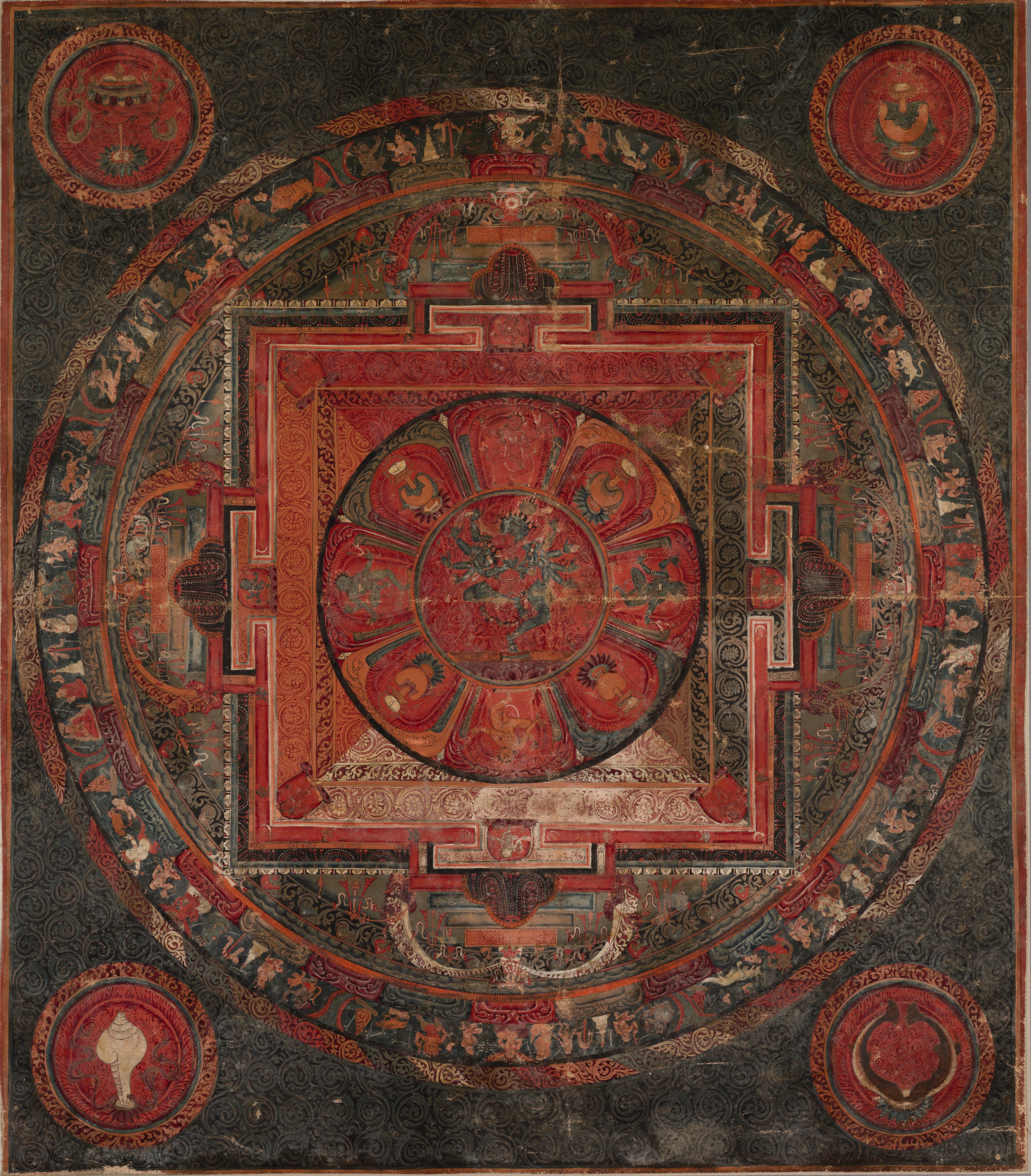The Cleveland Museum of Art
Collection Online as of April 25, 2024

Mandala of Chakrasamvara and Vajravarahi
late 1400s
Location: not on view
Did You Know?
In the corners are four auspicious symbols (clockwise from top left): umbrella (an emblem of royalty), pot (referencing abundance), pair of fish (symbol of productivity), and conch shell (indicating the eradication of obstacles).Description
A mandala is a two-dimensional diagram of a palace-like structure, viewed from above. This mandala depicts the abode of a 4-headed, 12-armed figure who personifies a major tantric Buddhist text, the Chakrasamvara-tantra. He dances in the bliss of sexual union with his consort, the red Vajravarahi, in the central circle, which is equivalent to the penthouse of their palace.Through guided meditation, practitioners can visualize entering through each of the four gates to experience the beauty of the enlightened realm. The outermost ring of cremation grounds indicates that one must overcome fear of death before reaching the realm of enlightenment.
- ?–1960C.L. Bharany, Calcutta [Kolkata], India, sold to the Cleveland Museum of Art1960–The Cleveland Museum of Art, Cleveland, OH
- “Annual Report for 1960.” The Bulletin of the Cleveland Museum of Art, vol. 48, no. 6, 1961, pp. 107–147. Mentioned: p. 122 25142457
- Himalayan Gallery 237 Rotation. The Cleveland Museum of Art, Cleveland, OH (organizer) (March 9-September 17, 2023).
- {{cite web|title=Mandala of Chakrasamvara and Vajravarahi|url=false|author=|year=late 1400s|access-date=25 April 2024|publisher=Cleveland Museum of Art}}
Source URL:
https://www.clevelandart.org/art/1960.211